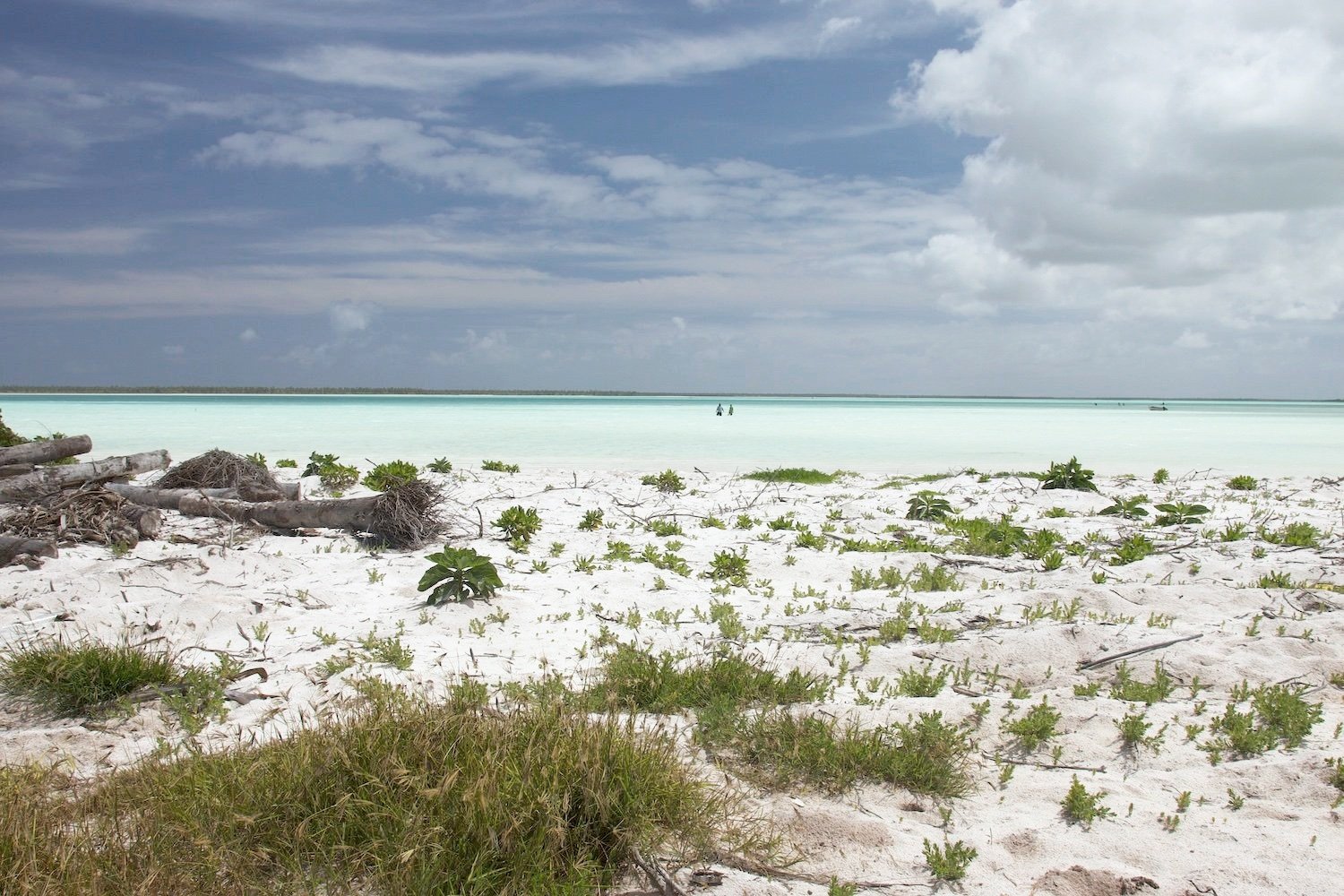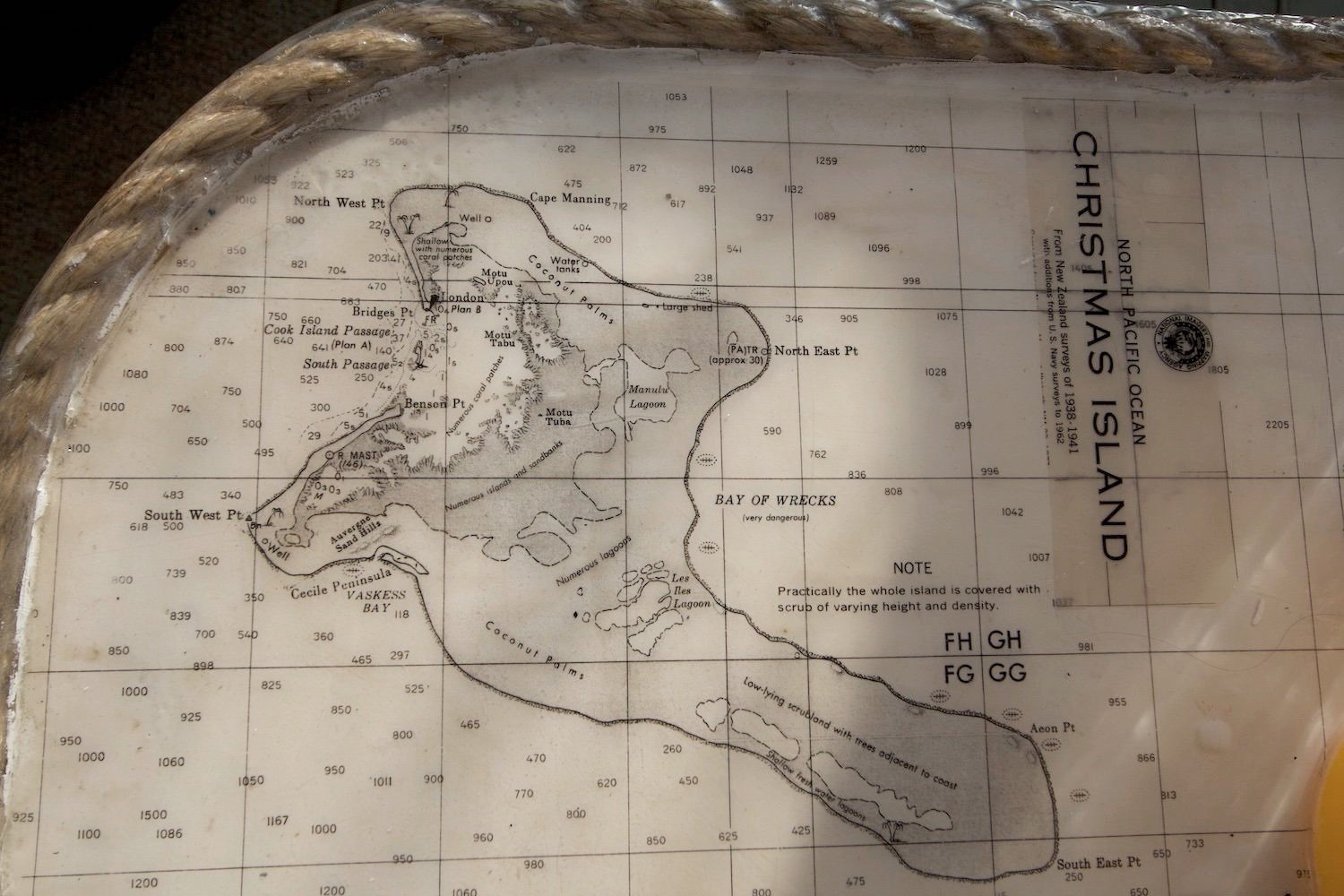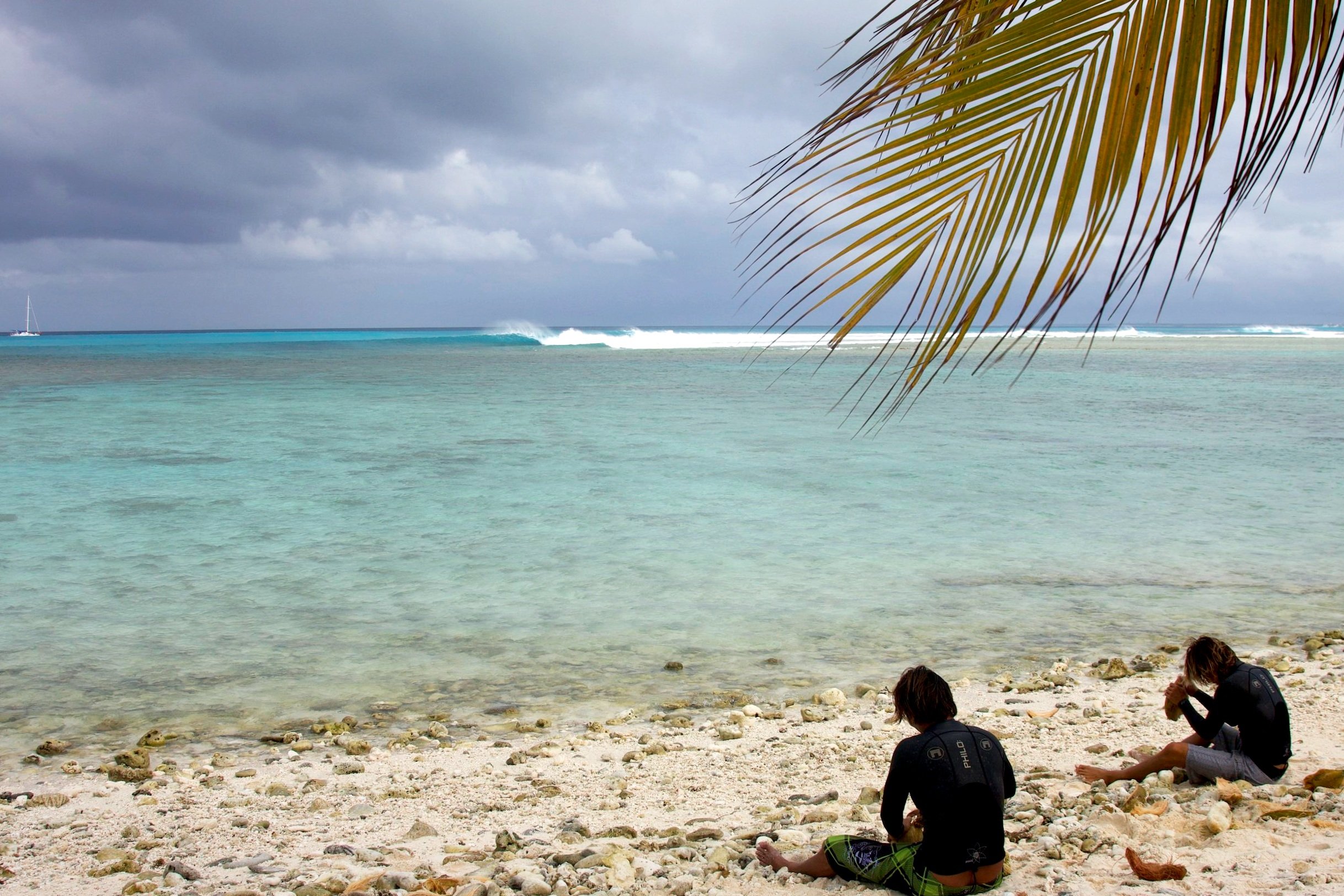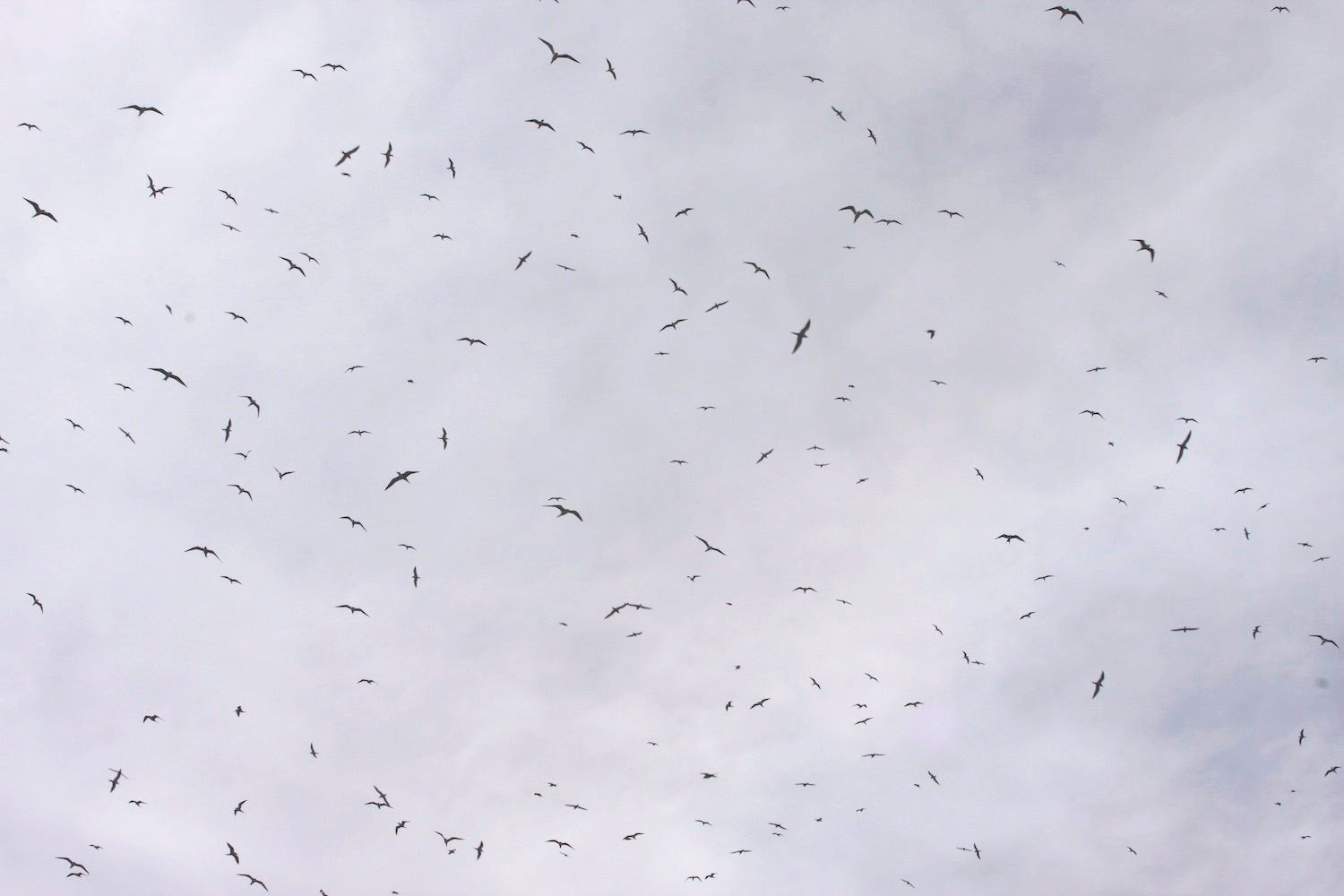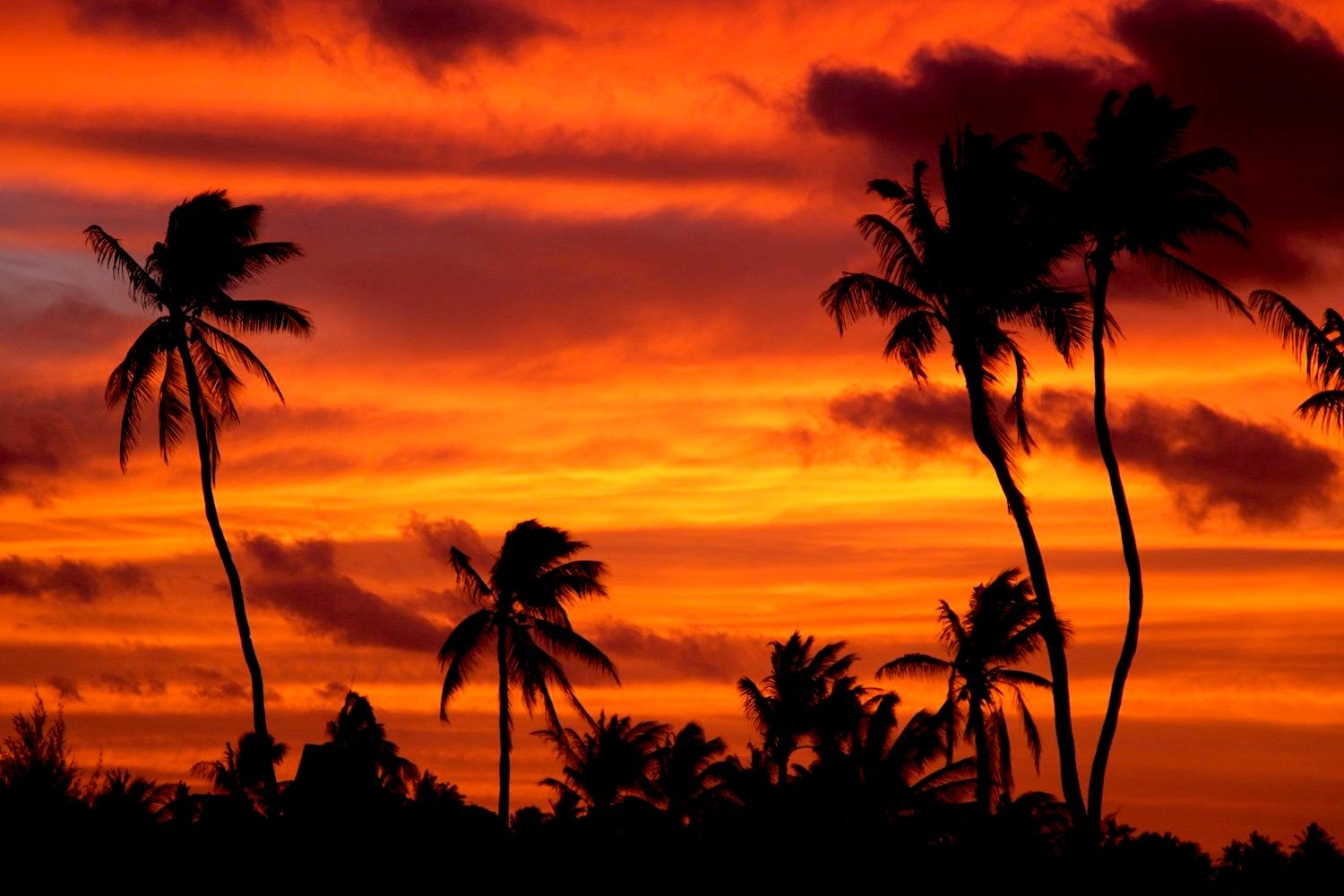Hairy Christmas
By Michael H. Kew
Here on the atoll is one single-shot rifle.
The police have it, you see.
Last time someone got shot was in 1978—policeman shot himself in the foot.
Before that was sometime near World War II.
In the late ‘50s and early ‘60s Micronesia was a fine constellation of dots to detonate. Today, crouched and caffeinated on a blindingly white coral beach amid shriek of eastwind within sight of feathery blue northswell, you have no inkling Kiritimati was once cog of this nuclear Cold War whoremachine.
“Who gives a damn?” Henry Kissinger replied in ‘69 when considering permanently eminently-domaining all of Micronesia for American and British navies. “There are only 90,000 people out there.”
One of those people fathered Etuati, a man now living near Kiritimati’s best surf spot, a fast right-hander that arcs and spools along reef pass before collapsing and vanishing into deep cyan lagoon. Etuati’s dad was drinking beer and smoking cigarettes at his home on Tarawa—capital atoll of Kiribati, 2,013 miles west of Kiritimati (Gilbertese for “Christmas”)—in ‘58 when he was recruited by the Brits for their nascent nuclear bomb tests aka Operation Grapple.
He come here and was happy until he see first bomb explode.
Hurt his eyes.
Made hard for him to breathe.
He saw so many bomb.
His skin looked bad forever.
On Tarawa he said his skin looked good and he felt good.
On Kiritimati he said he felt like he would die.
Die he did.
Cause?
Nobody bothered to cite potential effects of Grapple (followed by America’s Operation Dominic) inside sentient Micronesian bodies lain bare to huge atomic/hydrogenic ‘shrooms. Zillions of corals and insects and birds and fish vaporized. Ironically Etuati himself later left for Kiritimati to sweat atop copra fields and to flee his ruined and hive-like Tarawa.
Years further I too sweat into Kiritimati—nevermind those dubiously mint-green clouds heavy upon my brow.
It’s only from the reflection of the lagoon.
Via Honolulu, flown to the big claw-shaped atoll. While approaching the equatorial airstrip we watched orderly lines of white comb the glitterblue of Kiritimati’s north. We had expected this. Two days prior, distant Hawai’i was agunk.
To the south was Paris, an abandoned copra plantation. Beyond Paris was Poland, a remote speck of village. These were named by an eccentric French priest named Emmanuel Rougier who, for copra, leased the entire atoll from 1917 to 1939 and plunged 800,000 coconut trees into virgin sand. Eventually Rougier made his fortune and split for Tahiti. Windswept and tattered, the cocos remained.
Thousands of screeching birds twirl overhead in this vast surreal desert emptiness, the sky an unchanging blue, the air an unchanging Hot°F, the Pacific an unchanging screen of horizon. On Kiritimati isolation is imminent—especially if you are surfing.
We were not. Much. Found waves after a brief scoot below London but what looked magical on Google Earth at sea level was not so.
What are those brown spots?
What’s up with all these coral heads?
Along this three-mile fetch, satellite pixels reveal nearly 20 surf spots—real or imagined. Whitewater lines taper adoringly and userfriendingly into comely channels.
We should sue Google Earth.
What follows is not Kissinger’s concept:
If we had access to explosives, we could help the government put canoe passes in.
We’d just go around and look to where there might be a wave, and we’d help that wave out a whole lot.
It’s not very hard to do.
And since Kiritimati has no south swell spots, we could blast out a great one on the south coast for about $30,000.
World-class waves > A/H-bomb graves? Shame the military hadn’t thought of that.

